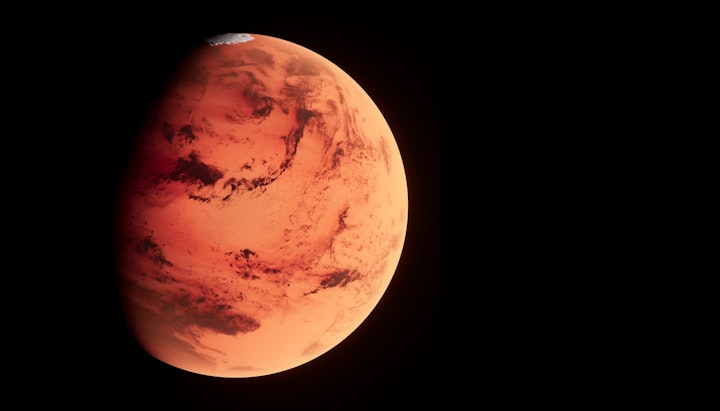
Mercury
Mercury is the smallest planet in the solar system and is closest to the sun. It has a rocky surface with numerous craters and no moons. Mercury has a heavily cratered surface due to its lack of an atmosphere and geological activity, which have prevented the erosion of craters over time. The planet has a very thin atmosphere made up of hydrogen, helium, and oxygen. Mercury has a very long day-night cycle, as it rotates very slowly on its axis and takes 88 Earth days to complete one orbit around the sun. The surface temperature of Mercury varies greatly, with daytime temperatures reaching up to 800 degrees Fahrenheit and nighttime temperatures dropping to minus 290 degrees Fahrenheit.
Venus
Venus is the second planet from the sun and is the hottest planet in the solar system. It has a thick atmosphere made up mainly of carbon dioxide, with clouds of sulfuric acid that trap heat and contribute to its high surface temperature of around 864 degrees Fahrenheit. Venus has a rocky surface with active volcanoes and no moons. The planet has a slow, retrograde rotation and takes 225 Earth days to complete one orbit around the sun. The thick atmosphere of Venus makes it difficult to observe its surface features, but radar has been used to map the planet and study its geological features. Venus has been the subject of numerous missions, including flybys and lander missions, as it provides valuable information about the effects of a thick atmosphere and volcanic activity on a planet's environment.
Earth
Earth is the third planet from the sun and is the only known planet to support life. It has a diverse geography, with oceans, continents, and various climate zones. Earth has a single natural satellite, the Moon, which is the largest moon in the solar system relative to the size of its host planet. The Earth's atmosphere is composed of 78% nitrogen, 21% oxygen, and 1% other gases, and it protects the planet from harmful solar radiation. The Earth's magnetic field helps to protect the planet from charged particles from the sun. The planet rotates on its axis, causing day and night, and takes 365.25 days to complete one orbit around the sun. Earth has a unique combination of conditions that make it a suitable habitat for life, including a stable temperature, the presence of liquid water, and the right chemical elements.
Mars
Mars is the fourth planet from the sun and is known as the "Red Planet" due to its reddish appearance caused by iron oxide (rust) on its surface. Mars has a thin atmosphere, primarily composed of carbon dioxide, with traces of nitrogen and argon. The planet has a rocky surface with towering volcanoes, the largest of which, Olympus Mons, is the largest volcano in the solar system. Mars also has deep valleys, including Valles Marineris, which is one of the largest canyons in the solar system. Mars has two small moons, Phobos and Deimos, which are thought to be captured asteroids. Mars has a 24.6-hour day and takes 687 Earth days to complete one orbit around the sun. Mars has been the subject of numerous missions, including flybys, orbiters, rovers, and landers, as it is considered a potential habitat for life and a potential location for future human settlements.
Jupiter
Jupiter is the largest planet in the solar system and is the fifth planet from the sun. It has a strong magnetic field and a large number of moons, including four large Galilean moons: Io, Europa, Ganymede, and Callisto. Jupiter has a distinctive appearance, with a famous Great Red Spot, a giant storm that has raged for at least 400 years. The planet is composed primarily of hydrogen and helium, with a small rocky core. Jupiter rotates very quickly on its axis, with a day that is only 9 hours and 56 minutes long. The planet takes 11.86 Earth years to complete one orbit around the sun. Jupiter has been the subject of numerous missions, including flybys and orbiters, which have studied its atmosphere, moons, and magnetic environment. The planet is also valuable for studying the early solar system and the formation of gas giants.
Saturn
Saturn is the sixth planet from the sun and is the second largest planet in the solar system. Saturn is best known for its stunning ring system, which is composed of billions of ice and rock particles that orbit the planet. The planet has many moons, including the largest, Titan, which has a dense atmosphere and is the only moon in the solar system with a substantial atmosphere. Saturn is composed primarily of hydrogen and helium, with a small rocky core. The planet rotates quickly on its axis and has a day that is only 10 hours and 39 minutes long. Saturn takes 29.46 Earth years to complete one orbit around the sun. Saturn has been the subject of numerous missions, including flybys and orbiters, which have studied its atmosphere, ring system, and moons. The study of Saturn provides valuable information about the formation and evolution of gas giants in the solar system.
Uranus
Uranus is the seventh planet from the sun and is the third largest planet in the solar system. Uranus is known for its unique axial tilt, which is tilted at an angle of 98 degrees relative to its orbit around the sun, giving it an extreme seasonal variation. The planet has a number of moons, including the largest, Titania, and a number of ring systems. Uranus is composed primarily of hydrogen and helium, with a small rocky core. The planet rotates slowly on its axis, with a day that is 17 hours and 14 minutes long. Uranus takes 84.01 Earth years to complete one orbit around the sun. Uranus has been the subject of one flyby mission, which provided valuable information about its atmosphere, interior structure, and moons. The study of Uranus provides valuable information about the evolution of ice giants in the solar system.
Neptune
Neptune is the eighth planet from the sun and is the farthest planet from the sun in our solar system. Neptune has a similar composition to Uranus, with a hydrogen-helium atmosphere and a small rocky core. It has a number of moons, including the largest, Triton, which is one of the few moons in the solar system with a retrograde orbit. Neptune is known for its dynamic weather, including large storms and high-speed winds. The planet rotates quickly on its axis, with a day that is only 16 hours and 7 minutes long. Neptune takes 164.79 Earth years to complete one orbit around the sun. Neptune has been the subject of one flyby mission, which provided valuable information about its atmosphere, interior structure, and moons. The study of Neptune provides valuable information about the evolution of ice giants in the solar system and the outer reaches of our solar system.
The eight planets in our solar system each have their own unique features and characteristics that make them fascinating to study. From the inner planets, Mercury, Venus, and Earth, to the gas giants, Jupiter, Saturn, Uranus, and Neptune, each planet offers its own story and provides valuable information about the formation and evolution of our solar system. The study of these planets and their moons, atmospheres, and surfaces continues to reveal new discoveries and expand our understanding of the universe.






Comments
There are no comments for this story
Be the first to respond and start the conversation.